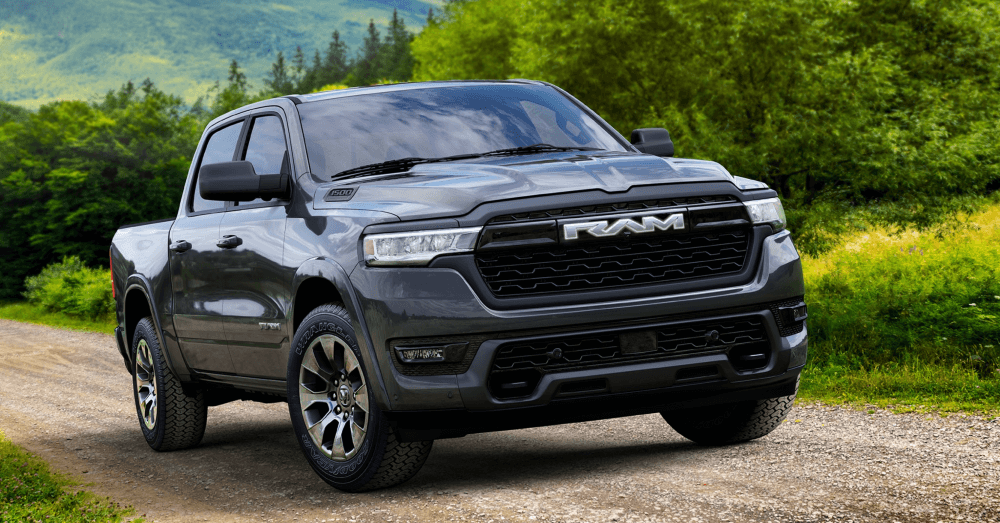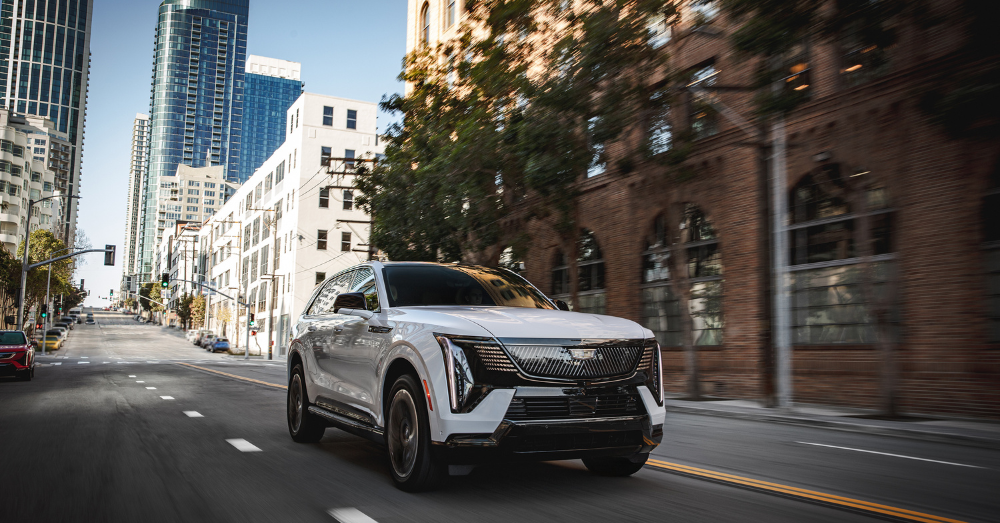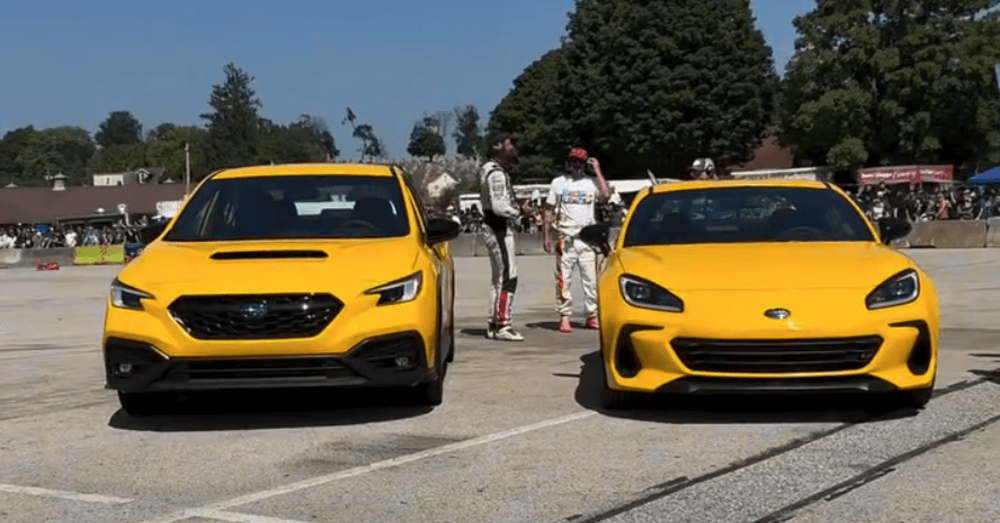
Ram Just Killed Its Electric Truck Dreams (But There’s a Plot Twist)
The Ram 1500 electric truck has been cancelled. This news should not be surprising to anyone, considering the current EV market.

When Range Meets Reality: Cadillac’s Giant vs Lucid’s Efficiency Master
The luxury EV market just got a lot more interesting. Two completely different philosophies have emerged in electric SUVs, and they couldn’t be further apart. The 2025 Cadillac Escalade IQ brings old-school American luxury with a monster battery, while the 2026 Lucid Gravity shows what happens when engineers get obsessed with efficiency. Both claim similar range numbers, but the story gets messy when you dig into how they actually work in real life.
- The Escalade IQ stuffs a 200+ kWh battery into a 9,000+ pound frame, creating efficiency challenges that math can’t solve
- Lucid Gravity hits 450 miles of range using just a 123 kWh battery through aerodynamic wizardry and smart engineering
- Charging speeds reveal the real difference – Gravity adds 200 miles in 11 minutes while Escalade needs the same time for half that
Two Ways to Build an Electric SUV
Step into any Cadillac dealer showroom and the Escalade IQ dominates the space. At 220+ inches long and nearly 77 inches tall, this thing looks like it could tow a house. But here’s what that presence costs: the IQ weighs 9,120 pounds. That’s four Honda Civics stacked on top of each other. Moving that much weight requires serious battery power. Cadillac crammed a 205 kWh pack under the floor, stacking battery cells two layers deep just to fit everything. The payoff? Around 460 miles of estimated range, though the SUV weighs so much it’s exempt from official EPA testing. Meanwhile, Lucid took a completely different path with the Gravity. Their SUV weighs about 6,100 pounds and still manages 450 miles of range with a 123 kWh battery. The math is wild – the Gravity squeezes 3.65 miles per kWh while the Escalade manages just 2.13. That’s like comparing a Prius to a pickup truck in terms of efficiency.
The Charging Game Changes Everything
Here’s where things flip upside down for road trips. Sure, the Escalade IQ can add 100 miles in 10 minutes at a DC fast charger. Sounds pretty good. Then you look at what the Gravity does: 200 miles in about 11 minutes at a 400kW station. The Gravity’s charging tech borders on ridiculous. Lucid built a system that works with both old 500V chargers and new 1000V equipment, automatically adjusting to squeeze maximum speed from whatever you plug into. The Escalade IQ handles 800-volt charging well enough, but it can’t match this flexibility. Tesla Supercharger users get a bonus with the Gravity – it comes with the Tesla charging port built right in. No adapters, no fumbling with cables. Recent real-world testing showed it hits about 210 kW at Superchargers and keeps charging above 200 kW until the battery reaches 42% capacity.
Weight vs Wind
Paper specs only tell part of the story. In city driving, that 9,000-pound Escalade fights physics every time you hit the brakes. Regenerative braking helps, but there’s only so much energy you can recover when you’re hauling around that much mass. Highway cruising favors the Gravity’s sleek shape. With a 0.24 drag coefficient, it slices through air like a sports car. The Escalade, built to look like its gas-powered sibling, pushes air around like a brick wall. Both have rear-wheel steering to help with parking lot maneuvers, but the driving experience couldn’t be more different. Need to stop quickly? The Escalade needs 203 feet from 70 mph. The Gravity does it in 163 feet. That 40-foot difference could save lives.
Plugging In Everywhere
Charging infrastructure tells an interesting story. The Gravity’s built-in Tesla port gives you access to the biggest fast-charging network in America right out of the box. Beyond Tesla, its advanced charging system maxes out whatever high-power station you find. Current 350kW+ chargers can’t always deliver full power to every vehicle, but the Gravity’s setup grabs every available watt. It’s like having a universal translator for EV charging. Both handle home charging at up to 19.2 kW with the right equipment. That’s enough to add about 37 miles per hour of charging – perfect for overnight top-ups.
Space and Comfort Trade-offs
The Escalade IQ’s bulk does buy you something: interior room. Traditional SUV proportions mean easy entry, high seating position, and a third row that actual adults can use. If you regularly haul seven people and all their stuff, the size makes sense. Lucid worked magic with the Gravity’s interior packaging. Despite the lower roofline, there’s surprising space inside. The flat-floor battery design creates flexible seating options, and folding all the seats flat opens up 111 cubic feet of cargo space.
The Real Range Test
Winter driving, mountain passes, loaded with gear – these scenarios separate marketing claims from reality. The Gravity’s efficiency advantage should hold up better under tough conditions. Less weight means less energy needed for everything from heating to climbing hills. The Escalade’s bigger battery provides a cushion, but you’re always fighting that extra weight. In cold weather, when battery capacity drops, the more efficient vehicle wins.
Decision Time
Range anxiety isn’t the issue here. Both SUVs go farther than most people drive in a day, and both charge fast enough for reasonable road trip stops. The choice comes down to what matters most. Pick the Escalade IQ if you need maximum interior space, love the commanding driving position, and want people to notice when you pull up. Cadillac’s dealer network and service reputation count for something too. Choose the Gravity if efficiency bothers you, if you appreciate clever engineering, and if you’d rather get to your destination faster thanks to quicker charging stops. The lower weight makes it more fun to drive, and the tech feels genuinely advanced. For long trips, the math favors the Gravity. Spending less time plugged in means more time moving, and the aerodynamics help maintain range at highway speeds where many EVs struggle. Both represent different ideas about what luxury means. The Escalade IQ says luxury means size, presence, and traditional comfort. The Gravity argues luxury means not having to compromise on anything – efficiency, performance, or space. The winner depends entirely on which philosophy matches how you actually live.

Subaru’s Bold New Move: 2026 BRZ and WRX Get Exclusive Yellow Special Editions
The 2026 Subaru Series.Yelllow special edition models are exciting versions of two of the most popular cars from the brand, and they only come one way.

Waymo Faces a Real Urban Gauntlet: Jaywalkers, Aggressive Drivers, and NYC Chaos Await
Imagine a self-driving car trying to make a right turn at 96th and Broadway. The light turns green, but pedestrians keep streaming across 96th Street. The Waymo waits patiently. The light turns red. More waiting. Then, before it even changes back to green, people are already crossing again. As one local observer joked, “It’ll be there for weeks.” This scenario perfectly captures the unique challenge facing Waymo as it begins testing its autonomous vehicles in the most demanding urban environment in America.
